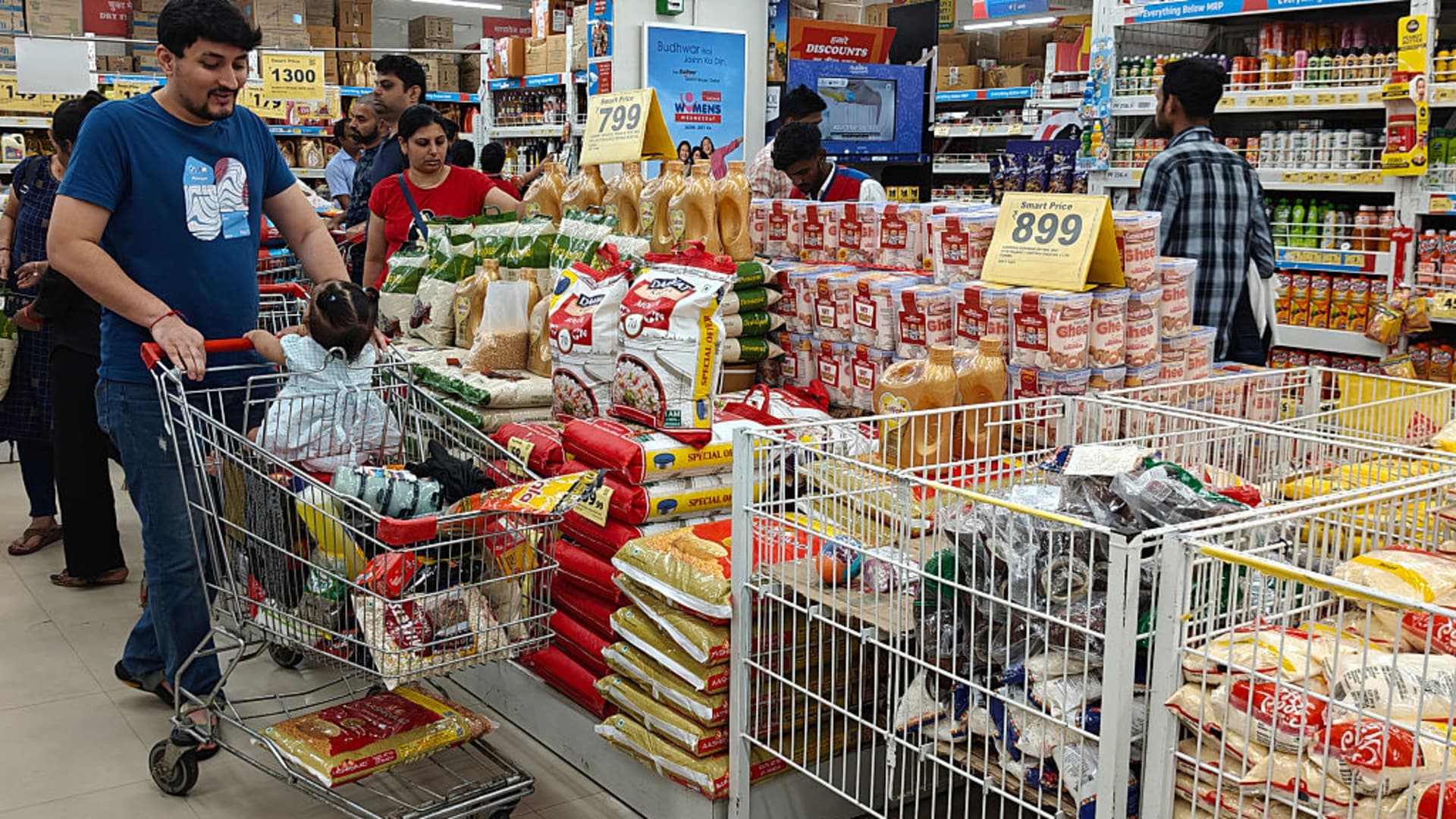India October inflation matches RBI outlook, easing hopes for rate cuts

A man pushes a trolley inside a supermarket in Mumbai, India, on September 7, 2025. (Photo by Indranil Aditya/NurPhoto via Getty Images)
Nurphoto | Nurphoto | Getty Images
India’s consumer inflation cooled to 0.25% in October, strengthening hopes of more policy easing by the Reserve Bank of India.
The headline inflation number was below estimates of a 0.48% rise, according to a Reuters poll of economists, and easing more than the 1.54% recorded in September.
In October, the central bank revised its inflation forecast to 2.6% from 3.1% for the fiscal year ending March 2026, but kept its key policy rate unchanged at 5.
The decline in headline inflation and food inflation in October is mainly attributed to impact of decline in GST (goods and services tax), favorable base effect and to a drop in inflation of oils and fats, vegetables, fruits, egg, footwear, cereals and products, transport and communication, according to the release.
The effects of the Reserve Bank of India’s outsized 50-basis-point rate cut in June have yet to filter through the economy, Governor Sanjay Malhotra had said then, adding that the decision to hold rates steady was unanimous.
However, the RBI had also hinted that the Indian economy could “see growth decelerate” in the second half of the fiscal year 2026 due to global trade uncertainties.
In August, the U.S. imposed an additional 25% tariff on Indian imports, raising total duties to as high as 50%, among the steepest imposed by Washington on its trading partners. Textiles, gems and jewelry, and marine products have been hit hardest.
While exports to the U.S. account for around 2% of India’s GDP, these sectors are labor-intensive. Prolonged weakness could lead to job losses and weigh on overall growth.
To cushion the blow, New Delhi reduced the goods and services tax on several items on Sept. 22, to spur domestic demand ahead of a month-long festive season, lowering prices for consumer goods, vehicles, and farm products.
The auto and jewelry sectors have performed well, while the pickup in demand for footwear, paints, fast-moving consumer goods, and textiles has been mixed, Indian brokerage Motilal Oswal said in a research report on Nov 7.
<





